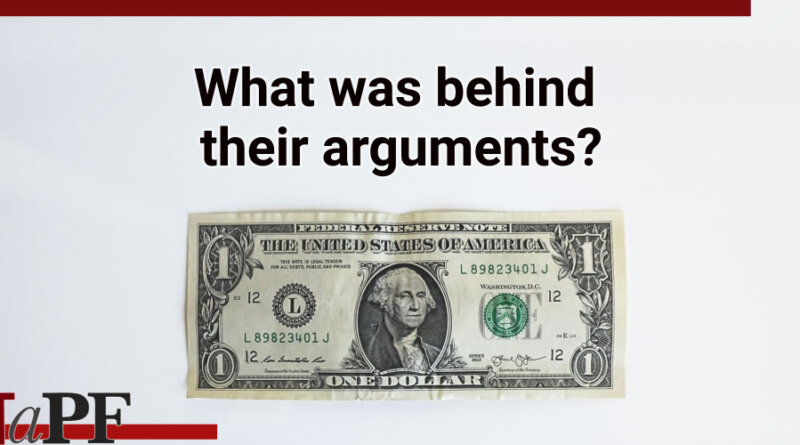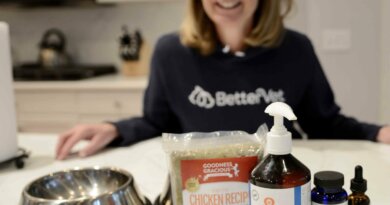AAFCO Meeting Ends With Suspicious Show of Stupidity From Industry – Truth about Pet Food
Another AAFCO meeting is done. What began as a typical meeting, ended with some strange arguments from industry trade groups.
The typical part…
There were 33 states in attendance, even though attendance seem less this year than in previous years.
FDA Center for Veterinary Medicien Director Tracey Forfa gave a Keynote address to the audience. It was a typical FDA presentation. However, I have to give credit to Ms. Forfa that she made the effort to speak with me after her presentation. No previous CVM Director has ever bothered to make such an effort for any consumer advocate to my knowledge. I thank her for making that effort.
One ingredient that was approved by members included some interesting language. It was the definition of “Black Soldier Fly Larvae Oil” (approved for use in dog food) – the interesting part is this requirement within the definition: “Black Soldier Fly Larvae Oil is the product obtained by mechanically extracting the oil from dried larvae of Black Soldier Fly that have been raised on a feedstock composed exclusively of feed grade materials.” In other words, the flies can ONLY be fed feed grade foods – they cannot be fed human grade foods. Very strange.
In the first half of the Ingredient Definitions Committee meeting, they approved a tentative definition of the ingredient “Dried Cricket” which will be approved for use in dog foods (not cat foods) and again this insect ingredient definition requires the insects to ONLY consume feed grade foods. “Dried Crickets are nymph through adult stage crickets, manufactured either by roasting or wet milling. Crickets are raised on feedstock composed exclusively of feed grade materials. Post-havest processing of crickets shall incorporate a microbial kill step. The ingredient must be labelled with guarantees for minimum crude protein and minimum crude fat on an as-fed basis. The ingredient is dried to no more than 6% moisture. The ingredient must contain no more than 7.5% chitin. It is for use in adult dog food as a source of protein and fat consistent with good feeding practices.”
I asked the committee what does “with good feeding practices” mean (found in the last sentence of the definition). FDA responded stating there is no science to base a maximum level of crickets in the pet food on – thus ‘good feeding practices’ means that manufacturers are asked to use their own training to base the level of crickets in the pet food on. In other words, the amount of crickets in a pet food is at manufacturer discretion.
During this session AAFCO discussed their “Common Food Index”. AAFCO asked for public comment on the Common Food Index back in May 2023 (https://truthaboutpetfood.com/aafcos-new-common-food-index/). We assume many pet owners provided comments because AAFCO shared “many of the comments they received asked for disclosure of quality of the common foods“. Unfortunately AAFCO stated grade or quality of common foods is “outside the scope of the Common Food Index“, which means pet food consumers are not provided with transparency to quality of ingredients.
As well, there was discussion of proper processing of Common Foods – they shared with some improper processing could result in an adulterated ingredient resulting in sick animals. The question was asked if safety information should be included or available to the public. AAFCO disagreed stating with any approved Common Food – “the burden of safety lies with the manufacturer.”
And AAFCO did officially approve the pet food label updates. Pet owners can read these updates in section PF5, page 33. Click Here to download. BUT, these label updates are not required for six years.
The strange part…
The Pet Food Committee meeting took place Tuesday afternoon 8/1/23. The main discussion of this session was regarding regulations permitting pet foods to make a “low copper claim” on their label. The proposal was:
“Low Copper. A dog food that bears on its label the claim ‘low copper’, ‘low in copper’, or words of similar designation shall:
1) Be substantiated as nutrtionally adequate for one or more life stages in accordance with Regulation PF7; and
2) Contain a maximum of no more than 15 mg copper/kg DM and no more than 3.75 mg copper/1,000 kcal of metabolizable energy; and
3) Bear on its label in the Guaranteed Analysis in accordance with Regulation PF4 a guarantee for the maximum amount of copper in the dog food.“
All this language simply means – if approved – a pet food can voluntarily implement a maximum copper level (it wouldn’t be required – it is voluntary) and state ‘Low in Copper’ on their label to alert pet owners.
And with this proposed rule, a hour long argument began. A veterinary nutritionist representing the Pet Food Institute adamantly disagreed with this proposal. She argued there is no science to validate this maximum, she argued that pet owners would be confused at the ‘low in copper’ claim and put their pets in danger, she argued that there is no evidence that any pet has been sickened by copper levels in pet foods, she argued that manufacturers and AAFCO would be sued for causing pets to be deficient in copper. She argued and she argued and she argued.
And then she was joined by another veterinarian representing the trade group American Feed Industry Association. These two veterinarians continued on with the perils of what will happen if AAFCO approves a voluntary claim on pet foods for ‘Low in Copper’. No matter what anyone said (myself included), these two industry veterinarians told these harrowing stories of what will happen if AAFCO allows pet food manufacturers to make a ‘Low in Copper’ product (should they choose to).
The stupid part…
Currently there is no maximum level of copper established for cat foods or dog foods. At manufacturer discretion, any level could be included in the pet food (with no disclosure to the consumer). The only thing that is required is a minimum of:
1.83 mg copper per 1,000 kcals for Adult Dog Foods.
In other words, pet foods can have 1.83 mg to ??? mg per 1,000 kcal copper.
The absurdity of their argument was/is…the maximum copper level that the proposed rule would allow is ABOVE the current (and long standing) copper minimum.
AAFCO Minimum
Per 1,000 kcal
1.83 mg copper
Proposed Maximum
Per 1,000 kcal
3.75 mg copper
In other words, their hour long arguments were completely baseless.
There is no need for new science to validate this level is safe, there is no concern pets would be copper deficient, there is…basically…no argument about this.
But for some strange reason, these industry veterinarians kept the argument going on baseless claims for more than an hour. They hammered the AAFCO Pet Food Committee so much, they actually confused most in the room.
I even questioned myself numerous times – is the proposed maximum below the current minimum? Am I missing something?
We weren’t missing anything, their arguments were baseless – meant to delay this proposed rule.
And then we realized their probable motive was…these arguing veterinarians represent Hill’s Pet Food, Mars Pet Food, Purina Pet Food, and Blue Buffalo Pet Food – all who manufacture prescription pet foods. Who these arguing veterinarians represent did not want the ‘Low in Copper’ claim to be on any pet foods other than a high cost prescription pet food. Their probable motive was to prevent any other brand – other than high cost prescription pet food – from manufacturing a ‘Low in Copper’ pet food.
Two bits of good news…
AAFCO’s Pet Food Committee did not fully accept their baseless arguments. The Pet Food Committee only delayed the decision until the next meeting in January 2024.
And…right now any pet food manufacturer can guarantee to pet owners the level of copper in their pet food. They don’t have to wait for an AAFCO ruling. (They will not be allowed to make a label claim of ‘Low in Copper’ – but they can guarantee their copper level to pet owners by stating it in the Guaranteed Analysis.) Let’s hope manufacturers will promptly implement this.
The next AAFCO meeting will be in January in Chattanooga, TN.
Wishing you and your pet(s) the best,
Susan Thixton
Pet Food Safety Advocate
Author Buyer Beware, Co-Author Dinner PAWsible
TruthaboutPetFood.com
Association for Truth in Pet Food

Become a member of our pet food consumer Association. Association for Truth in Pet Food is a a stakeholder organization representing the voice of pet food consumers at AAFCO and with FDA. Your membership helps representatives attend meetings and voice consumer concerns with regulatory authorities. Click Here to learn more.
What’s in Your Pet’s Food?
Is your dog or cat eating risk ingredients? Chinese imports? Petsumer Report tells the ‘rest of the story’ on over 5,000 cat foods, dog foods, and pet treats. 30 Day Satisfaction Guarantee. Click Here to preview Petsumer Report. www.PetsumerReport.com
Find Healthy Pet Foods in Your Area Click Here

The 2023 List
Susan’s List of trusted pet foods. Click Here to learn more.

The 2023 Treat List
Susan’s List of trusted pet treat manufacturers. Click Here to learn more.




